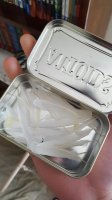There's no such thing as an "off season moult". They moult when they do. If your bird is on a healthy diet there is nothing you need to do for feather health. If your birds get any sunlight through a window that calendar doesn't mean much. It's meant for a closed artificial environment (basically a breeding environment).
Hello! First of a , thank you for replying, i really do appreciate it. I do agree that health is a huge factor in feather growth, However, I politely disagree in terms of birds simply molting when they do--with canaries at least.
Although, it is my first time having a pet canary, I have done by best to find as much information as I can to better care for him.
Based on the websites and forums I could find, molting is very variable depending on the bird, its species, size, etc. So far, the molting information I've found on canaeis state that they tend to molt during late summer and early fall. Therefore, molts out of that period are considered as off-season molt. Also, from what I've found, canaries have an internal clock that is affected by temperature as well as the amount of light they receive; which would explain why they would molt during a specific time in the year. Off-season molts are usualy triggered by certain factors such as poor health, change of temperature, too much light, stress, etc.
Peeps most likely wasnt able to molt normally during the summer due to several reasons: 1) stress from moving in with me, and 2) errors I made as a novice pet owner: I kept my house cold, and I tried to reduce the sunlight in our home since weather in my area tends to become extreme.
Another reason why I know it was an off-season molt is was that it was timed during winter holidays, when more people were visiting in and out of our home. He got very stressed at the time, and I did not know about proper lighting either. A lot of things happened to him last year which mustve delayed his molt until winter.
If I am incorrect, however, I'm more than happy to accept and learn something new.
In terms of diet, Peeps gets he's canary pellets, seeds, eggs, and friend greens. He gets about 2-3 hours of excerise outside his cage, and songs continuously. He is quite healthy in that respect.



 I have been keeping the feather I manage to save in an altoids box lol
I have been keeping the feather I manage to save in an altoids box lol
